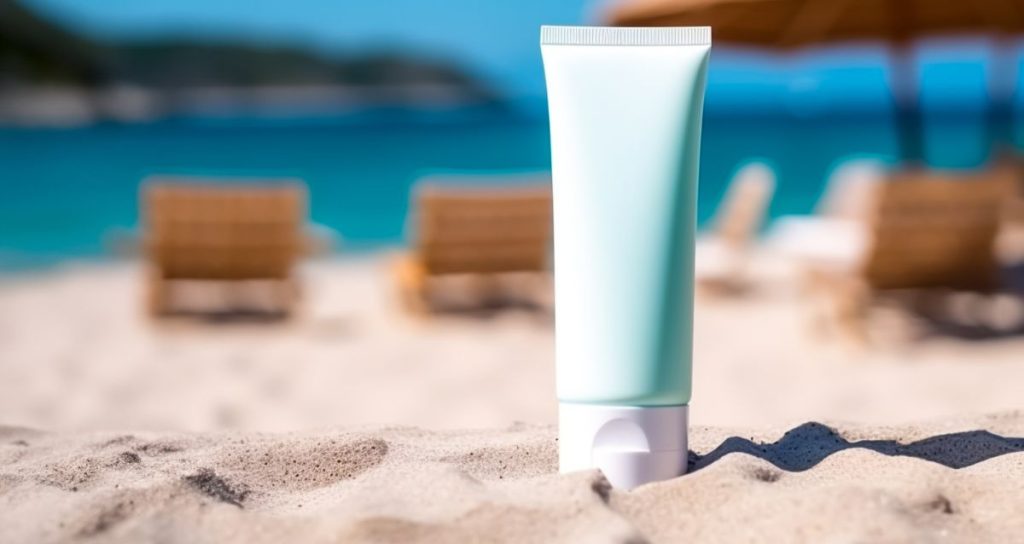Sunscreen is a crucial component of daily skincare, providing essential protection against harmful UV rays that can lead to skin damage, premature aging, and even skin cancer. Choosing the right sunscreen involves understanding various factors, including SPF ratings, skin type compatibility, and active ingredients. This guide will help you make an informed decision for optimal sun protection.
Understanding SPF and PA Ratings
SPF (Sun Protection Factor): SPF measures how well sunscreen can protect your skin from UVB rays, which cause sunburn and contribute to skin cancer. An SPF 30 sunscreen blocks approximately 97% of UVB rays, while SPF 50 blocks around 98%. Although the difference may seem minimal, the higher SPF provides more protection for sensitive skin or those with a history of skin cancer. Additionally, higher SPF ratings ensure longer protection periods, reducing the frequency of reapplication needed during extended sun exposure.
PA Rating: The PA rating indicates the level of protection against UVA rays, which penetrate deeper into the skin and cause long-term damage such as wrinkles, pigmentation, and the loss of skin elasticity. The rating ranges from PA+ (some protection) to PA++++ (extremely high protection). UVA rays are present all year round, and their ability to penetrate glass makes daily application of broad-spectrum sunscreen essential, even indoors or on cloudy days.
Types of Sunscreens
Physical (Mineral) Sunscreens: These sunscreens contain ingredients like zinc oxide and titanium dioxide that sit on top of the skin and reflect UV rays. They are less likely to cause irritation, making them suitable for sensitive skin and children. Physical sunscreens start working immediately upon application and are generally considered safer for sensitive skin types. They also have fewer chemical ingredients, reducing the risk of skin reactions.
Chemical Sunscreens: Chemical sunscreens absorb UV rays and convert them into heat, which is then released from the skin. Common ingredients include avobenzone, oxybenzone, and octinoxate. These sunscreens tend to be more lightweight and less visible on the skin compared to physical sunscreens. They require about 20 minutes after application to become effective and often provide more uniform coverage due to their ease of spreading.
Choosing the Right Sunscreen for Your Skin Type
Oily Skin: If you have oily skin, opt for oil-free, non-comedogenic formulas that won’t clog pores. Gel-based sunscreens or those labeled as “mattifying” can help control excess oil. Look for ingredients like silica or isododecane that help absorb oil and leave a matte finish, preventing your skin from looking greasy throughout the day.
Dry Skin: Look for sunscreens with hydrating ingredients like glycerin, hyaluronic acid, and ceramides. Cream-based formulations can provide extra moisture. Sunscreens with added moisturizers help create a barrier that locks in hydration, making them ideal for dry or dehydrated skin types. Choose products with a creamy consistency to ensure your skin stays hydrated and protected.
Sensitive Skin: Physical sunscreens with zinc oxide or titanium dioxide are less likely to cause irritation. Avoid fragrances, parabens, and alcohol-based products, as these can exacerbate sensitivity. Look for formulations labeled as hypoallergenic and designed for sensitive skin. Ingredients like aloe vera and chamomile can also soothe and calm the skin, reducing the risk of irritation.
Combination Skin: For combination skin, a lightweight, non-comedogenic sunscreen that balances moisture without adding excess oil is ideal. Gel or fluid formulations work well, providing hydration to drier areas while keeping oily zones matte. You might also consider using different sunscreens for different areas of your face, such as a hydrating formula for dry areas and a mattifying one for oily zones.
Acne-Prone Skin: Non-comedogenic and oil-free sunscreens are a must. Ingredients like salicylic acid can help manage acne while providing sun protection. Sunscreens with anti-inflammatory ingredients like niacinamide can also reduce redness and prevent acne flare-ups. It’s crucial to avoid heavy, greasy formulations that can exacerbate breakouts and clog pores.
Pigmentation and Melasma: Broad-spectrum sunscreens with high SPF and PA ratings are crucial. Physical sunscreens are often recommended to prevent further pigmentation. Look for sunscreens with added antioxidants like vitamin C or niacinamide, which can help lighten existing pigmentation and prevent new spots from forming. Consistent use is key in managing pigmentation issues effectively.
Key Ingredients to Consider
Zinc Oxide and Titanium Dioxide: These are the primary ingredients in physical sunscreens, providing broad-spectrum protection without causing irritation. They are effective immediately upon application and are less likely to cause allergic reactions. They also offer a safer option for those with sensitive or reactive skin types.
Avobenzone: A common ingredient in chemical sunscreens that provides excellent UVA protection. It is often combined with other filters for stability. Avobenzone is particularly effective at absorbing long-wave UVA rays, which are responsible for deeper skin damage. However, it can degrade when exposed to sunlight, so it’s often paired with stabilizing ingredients.
Tinosorb S and Tinosorb M: These are newer, broad-spectrum filters that offer high stability and protection against both UVA and UVB rays. Tinosorb filters are photostable and do not degrade in sunlight, providing long-lasting protection. They also have a broad range of efficacy, making them suitable for various skin types and concerns.
Mexoryl SX and Mexoryl XL: These filters provide long-lasting UVA protection and are often found in high-end sunscreens. They are highly photostable, meaning they maintain their protective capabilities even after exposure to sunlight. Mexoryl SX is water-soluble, making it ideal for use in water-based formulations, while Mexoryl XL is oil-soluble and works well in cream-based sunscreens.
Application Tips
Apply Generously: Use about a teaspoon of sunscreen for each body part (face, neck, each arm, etc.). A common mistake is not applying enough, which reduces effectiveness. Ensure even coverage by applying sunscreen in layers and spreading it evenly across all exposed skin.
Reapply Regularly: Sunscreen should be reapplied every two hours, and immediately after swimming, sweating, or towel drying. Reapplication is crucial to maintain protection, especially during prolonged sun exposure. Carry a travel-sized sunscreen for easy reapplication on the go.
Use Daily: Even on cloudy days or when indoors, as UV rays can penetrate windows and cause skin damage. Incorporate sunscreen into your daily skincare routine, applying it as the final step before makeup. This habit ensures your skin is protected every day, reducing the risk of cumulative UV damage.
Sunscreen Myths Debunked
Myth 1: Dark Skin Doesn’t Need Sunscreen: Regardless of skin color, everyone is susceptible to UV damage. Darker skin has a natural SPF of around 13, but it is not enough to prevent long-term damage and skin cancer. Regular use of sunscreen can prevent hyperpigmentation and other skin issues commonly seen in darker skin tones.
Myth 2: Sunscreen Causes Acne: Non-comedogenic and oil-free sunscreens are specifically formulated to prevent breakouts. Always choose products suited to your skin type. Modern formulations include acne-fighting ingredients and lightweight textures that do not clog pores, making sunscreen use safe for acne-prone skin.
Myth 3: Sunscreen Is Only for Sunny Days: UV rays can penetrate clouds and windows, making daily sunscreen application essential for protection against cumulative damage. UVA rays are present all year round and can cause long-term skin damage even on cloudy or overcast days. Daily use of sunscreen is crucial for comprehensive protection.
Additional Sun Protection Measures
Clothing: Wear long sleeves, wide-brimmed hats, and sunglasses to provide physical barriers against UV rays. Clothing with a high UPF (Ultraviolet Protection Factor) rating offers additional protection. Opt for tightly woven fabrics that block out more sunlight.
Seek Shade: Whenever possible, stay in the shade, especially during peak sun hours (10 a.m. to 4 p.m.). Planning outdoor activities during early morning or late afternoon can significantly reduce UV exposure. Shade structures like umbrellas or canopies provide extra protection during prolonged outdoor activities.
Avoid Tanning Beds: These emit harmful UV radiation and significantly increase the risk of skin cancer. Tanning beds are not a safe alternative to sun exposure and can cause severe skin damage. Embrace your natural skin tone and use self-tanning products if you desire a sun-kissed look without the risks.
Conclusion
Choosing the right sunscreen is essential for protecting your skin from the harmful effects of UV radiation. By understanding the differences between physical and chemical sunscreens, selecting products based on your skin type, and adhering to proper application guidelines, you can ensure comprehensive sun protection. Remember, sunscreen should be an integral part of your daily skincare routine, regardless of the weather or season. Investing in high-quality sunscreen such as the Ultrasun SPF 50 PA++++ Anti-Pigmentation Sunscreen and using it correctly can significantly reduce your risk of skin damage and maintain your skin’s health and appearance over time.


